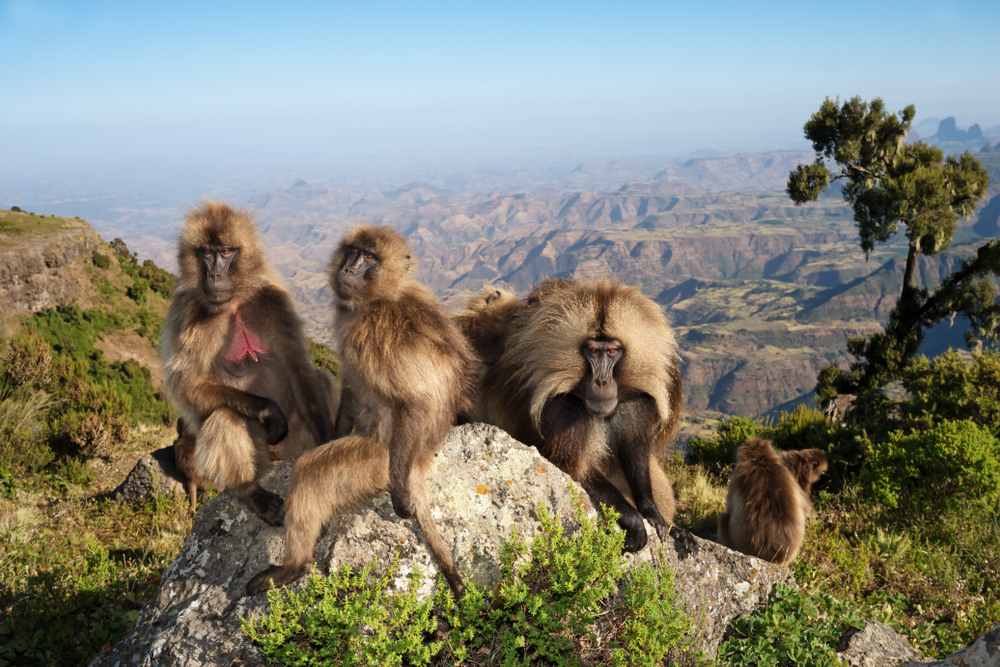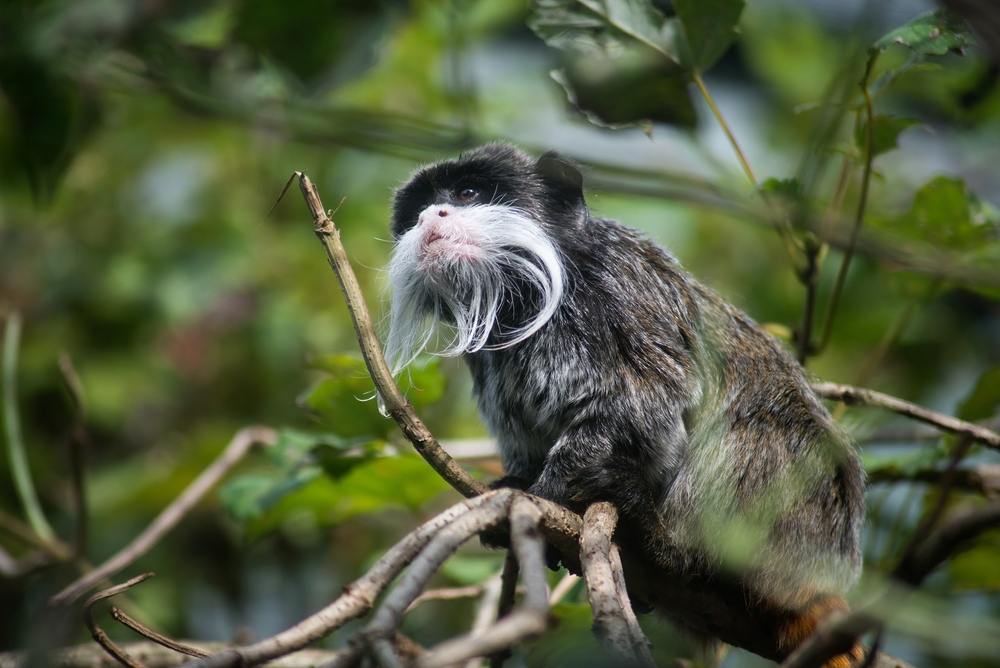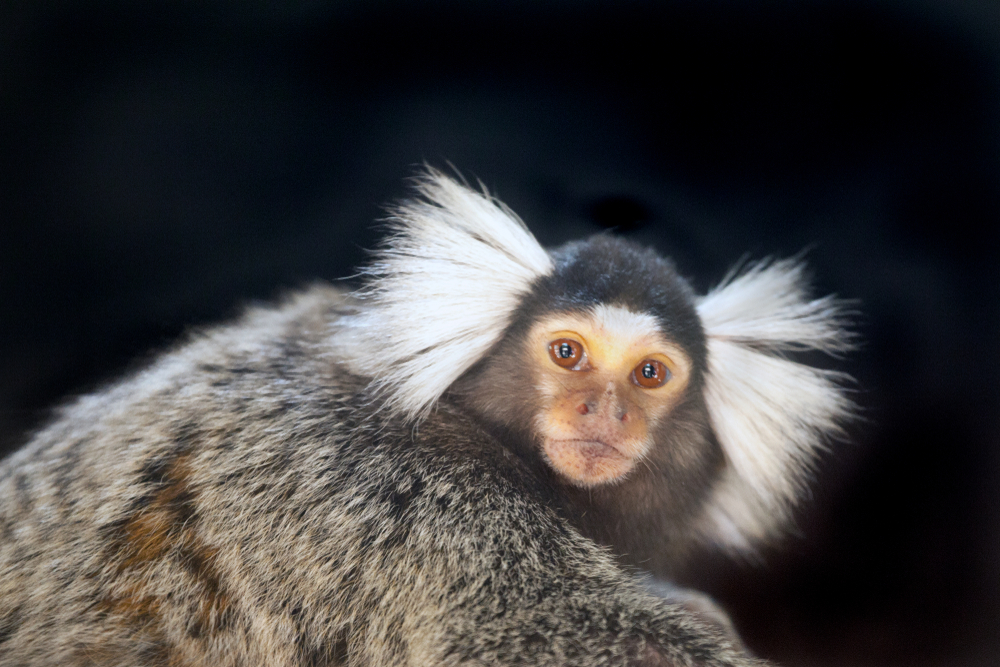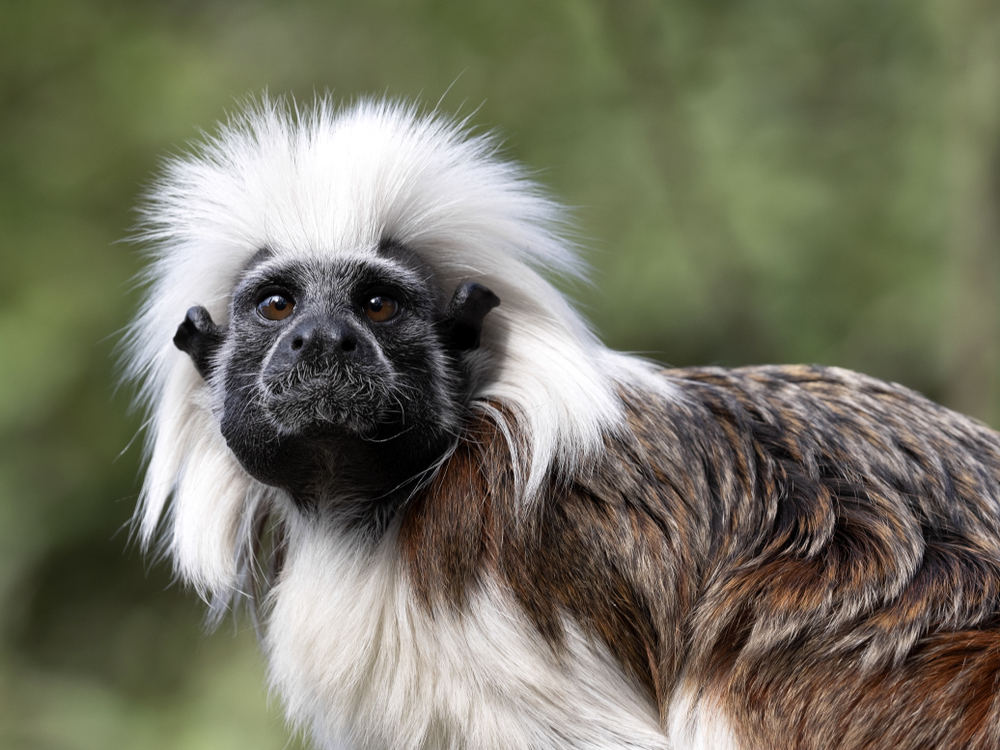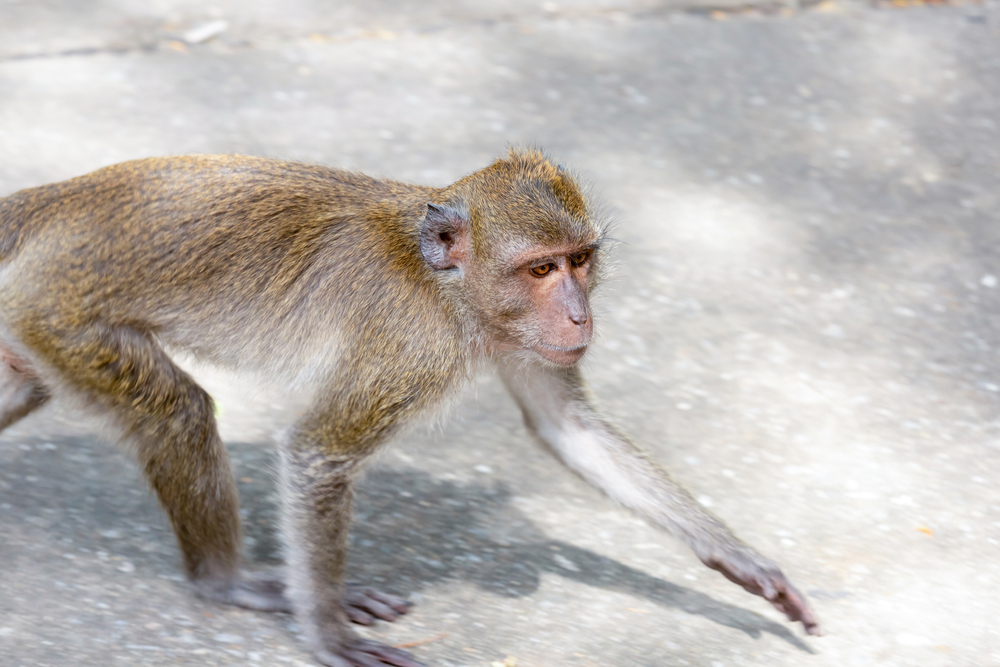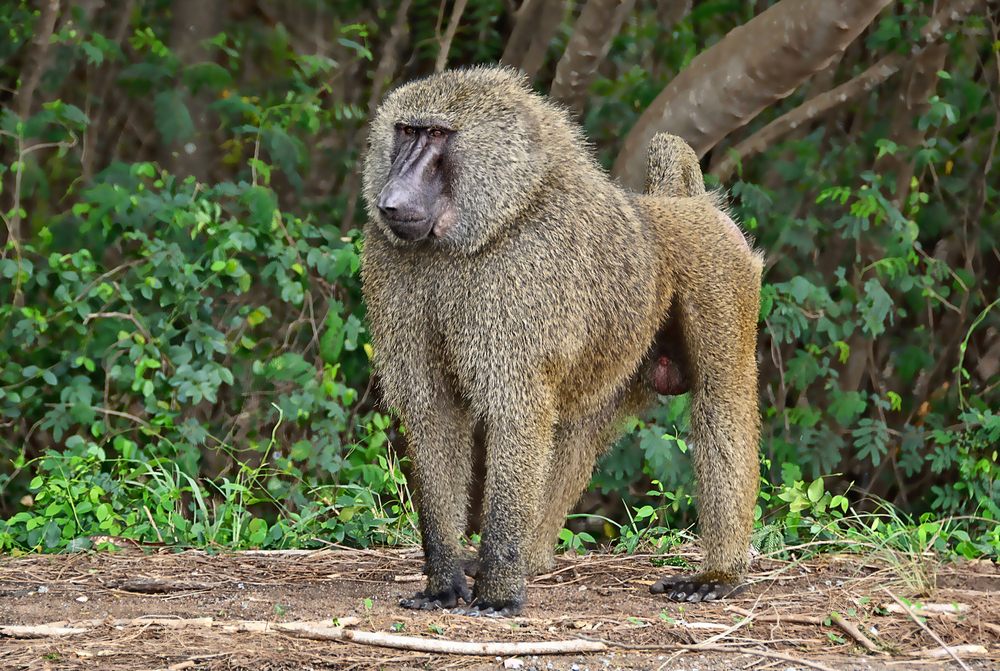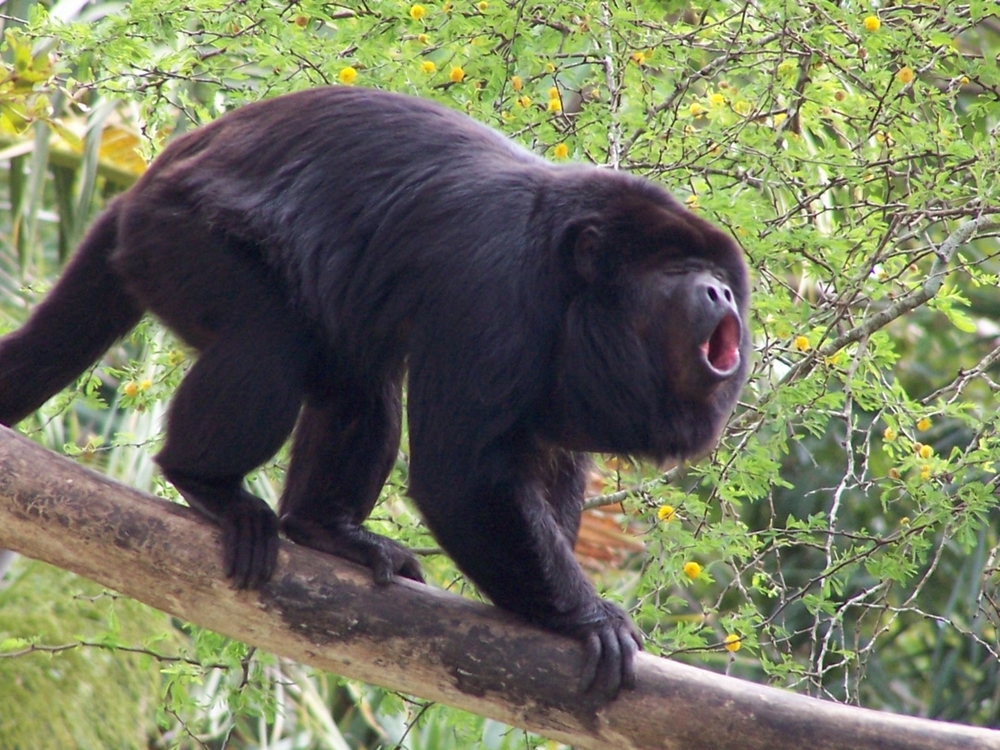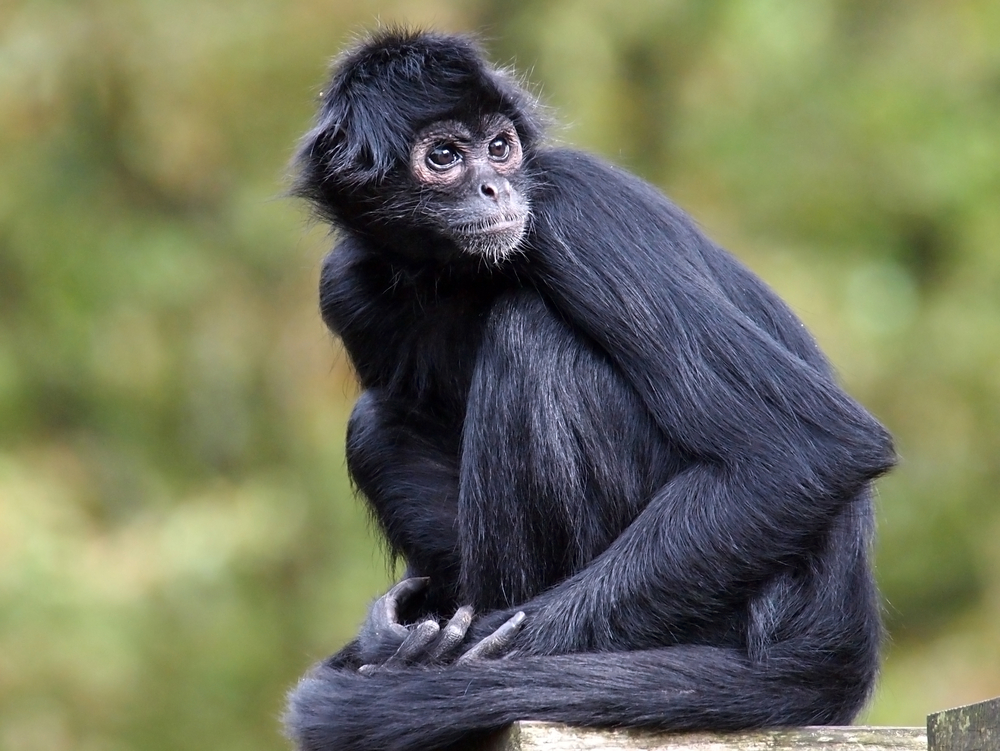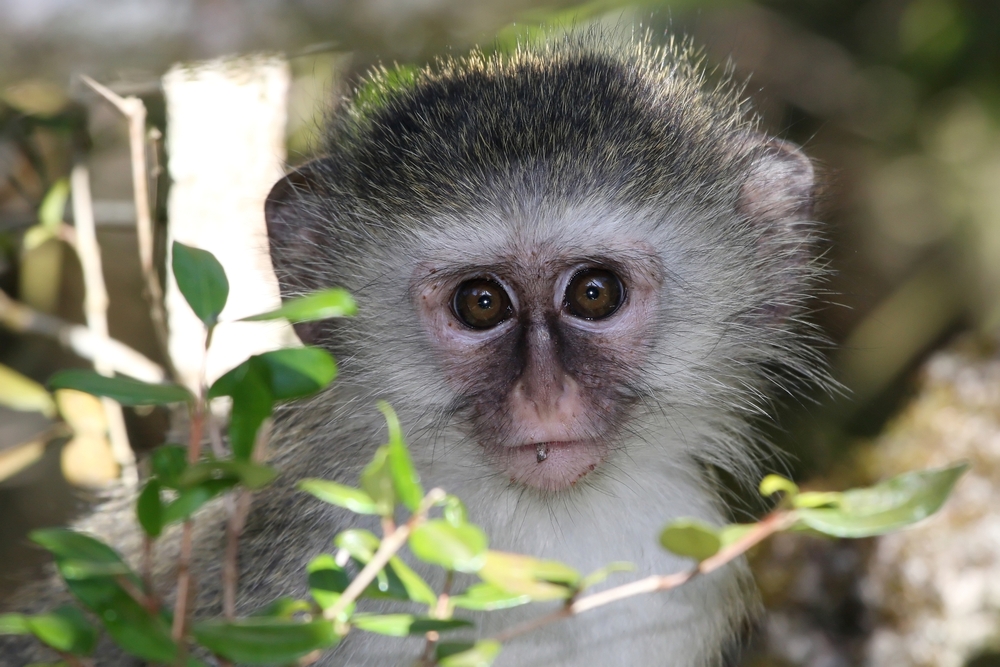The Gelada is the only living species in the genus Theropithecus, making it distinct from all other modern monkeys, including baboons.
However, its closest living relatives are the true baboons in the genus Papio, particularly:
-
Hamadryas Baboon (Papio hamadryas)
-
Found in Ethiopia and nearby areas
-
Shares some similarities in social structure and arid highland habitat
-
Both species exhibit male-dominated harems and live in multi-level societies
-
Other close relatives:
-
Olive Baboon (Papio anubis)
-
Genetic studies show geladas and olive baboons share a recent common ancestor
-
-
Extinct relatives:
-
Fossil species like Theropithecus brumpti and Theropithecus oswaldi were larger grassland primates that once roamed East Africa
-
While not a true baboon, the gelada is most closely related to the Papio genus, with the hamadryas baboon being its closest extant behavioral and ecological counterpart.



































































